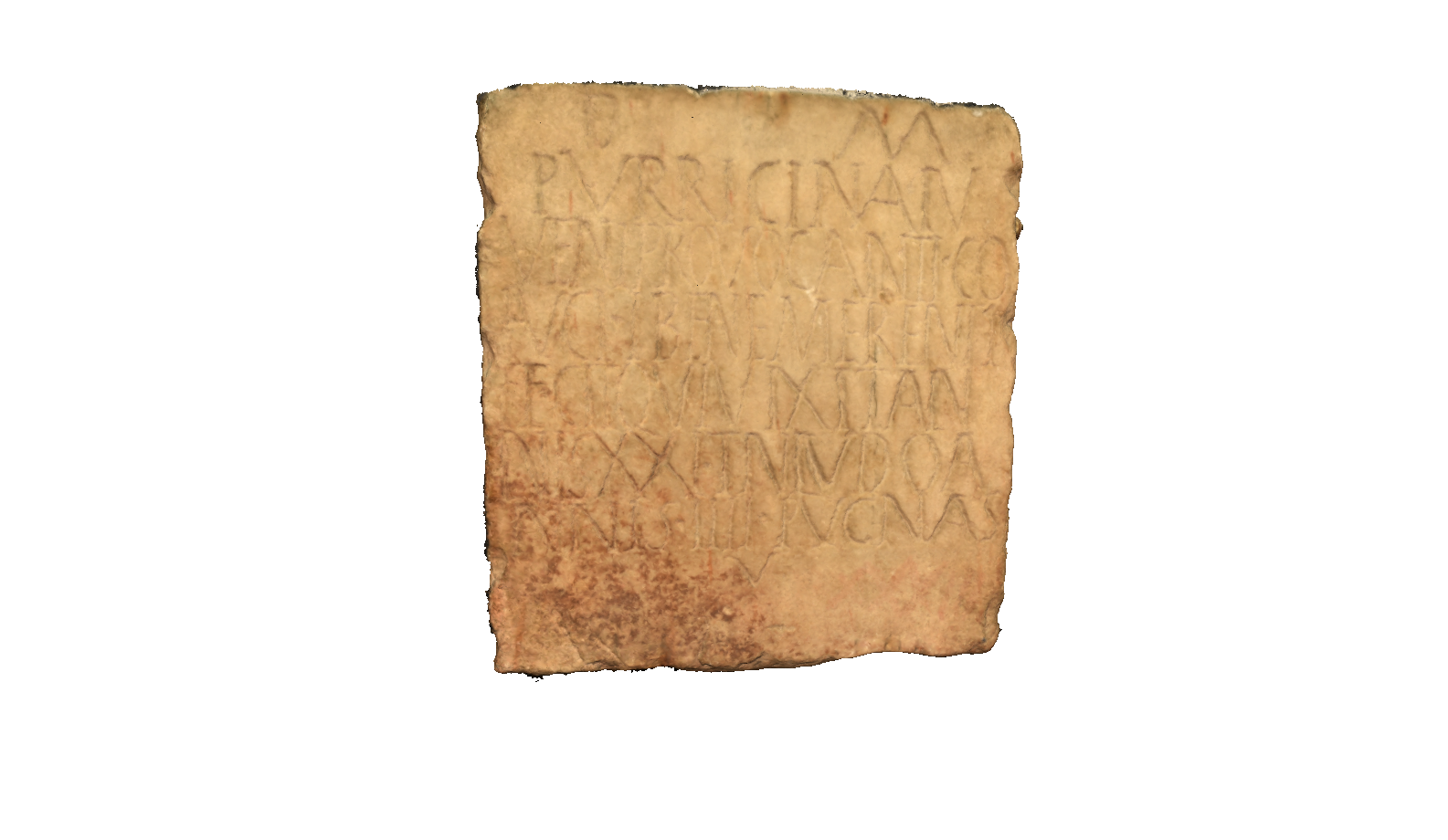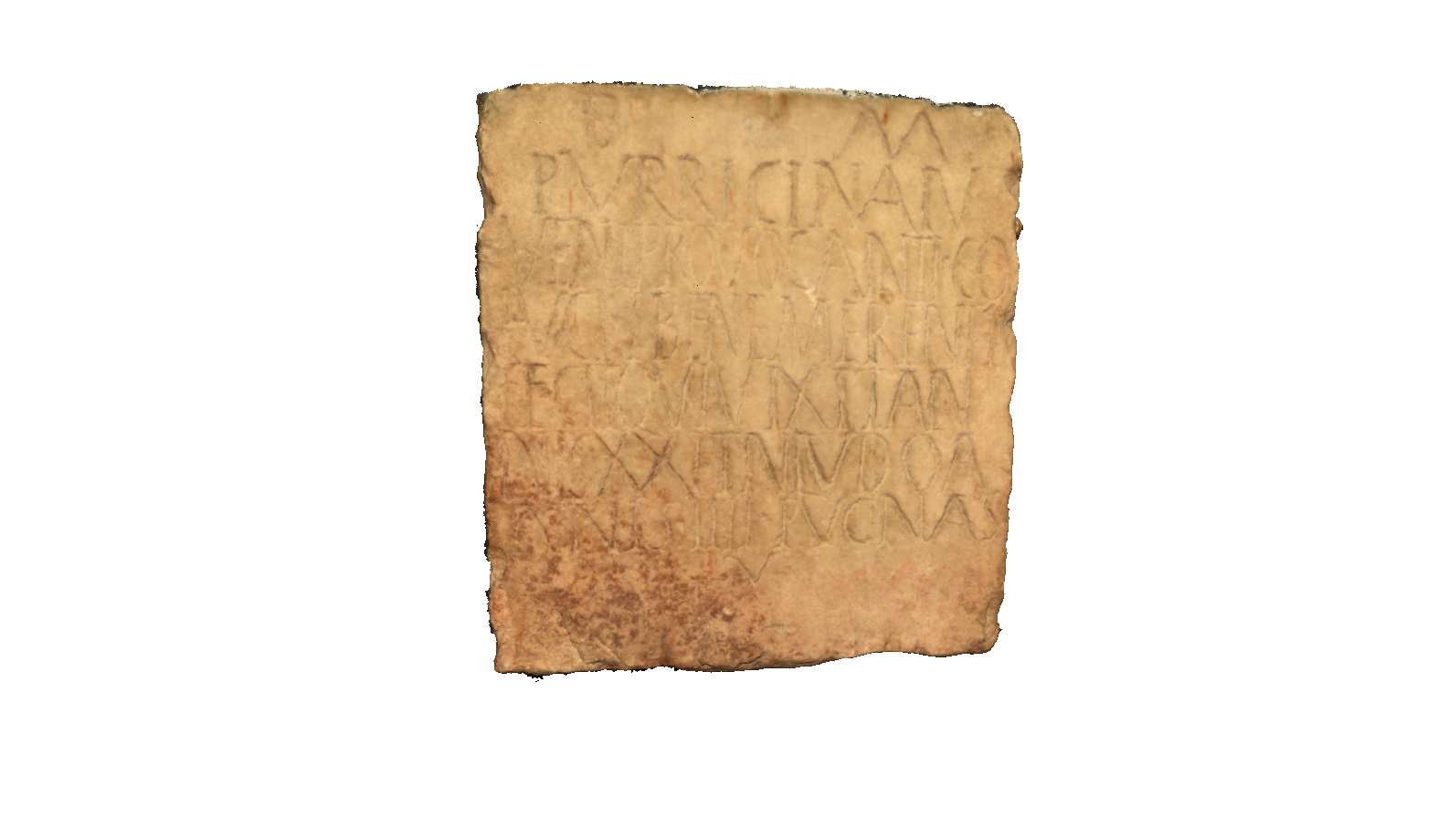Description
Click on the image to go full screen
This stele, found in the area of the Caffè Pedrocchi, has chipped edges, probably due to reuse in another structure, an event shared by many artefacts found in this same context. From an epigraphic analysis of the style of the inscribed message and of the shape of the letters, which are very elongated and separated by irregular spaces, it was possible to date them to the 3rd century AD.
This is a funerary stele of a woman for her husband, but the exceptionality is that both are slaves: in fact, the inscription reminds that ''Purricina'' made this monument for her young husband (“Iuveni coniugi”), aged twenty-one years (“vixit annis XXI”). Interesting is the profession of the boy, remembered as a 'provocator', a lightly armed gladiator whose job was to bait the beasts or opponents into a fight. He spent four years in the gladiatorial school where gladiators lived and trained (“in ludo annis IIII”) and faced five fights (“pugnas V”), among which the last one was perhaps fatal.
Regarding Purricina, it is her name that reveals information about her status: the correct form would be “Pyrricina” and refers to pyrrichia, the pantomime dance in which mimicry and gestures combine storytelling and dance. It has therefore been hypothesised that Purricina was a lydia, an entertainer, following the Roman custom of naming slaves according to their role.

